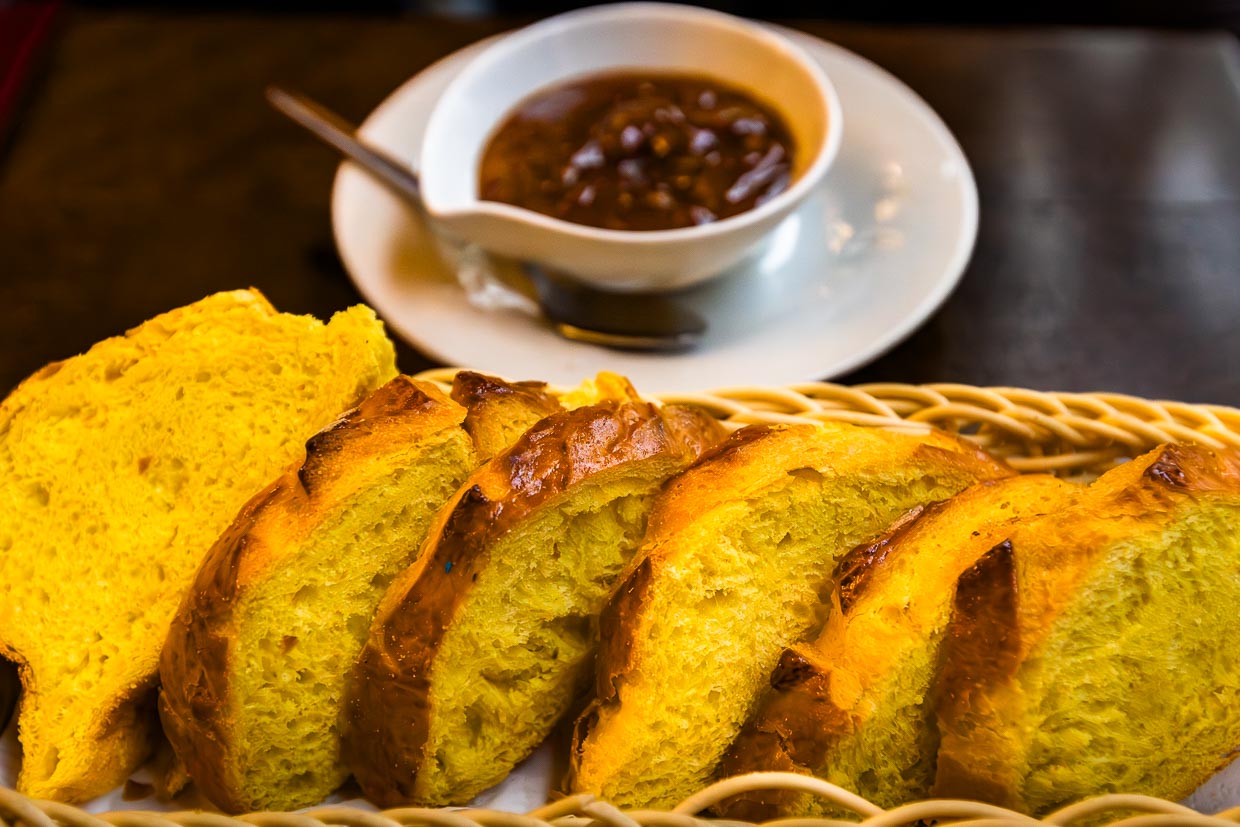The Kilbi is a traditional festival that is celebrated throughout the canton of Fribourg and is one of Switzerland’s living traditions. The name La Bènichon is derived from the Latin word benedictio, which means blessing. The German word Kilbi comes from the word Kirchweihe (Church consecration). Nowadays, the Kilbi has moved away from its religious origins and has become a popular festival.

Even in the Middle Ages, people wanted to celebrate after a busy summer. The oldest known written reference to the Kilbi dates back to 1443, when the Freiburg city council issued a decree against riots by Kilbi vagabonds. The secular element of the festival became increasingly important and alcohol certainly played a major role. La Bénichon lasted three days, from Sunday to Tuesday. Kilbi Monday was traditionally the day on which the shepherds, who had spent the summer with the animals on the alp, received their wages. Even today, the Schafscheid in Jaun takes place on a Monday, as it has for more than 400 years. On this day, the shepherds return to the valley with their sheep. The Kilbi in the valley regions usually takes place in September and marks the end of the harvest, while the Kilbi in the mountain regions symbolizes the end of summering and the return of the herds from the alp.


Kilbi menu: a potpourri of specialties
The Kilbi festival is a culinary condensation of Fribourg specialties. A total of twelve specialties come from the Fribourg region. The majority of them can be found on the Kilbi menu. The feast begins with Cuchaule and Kilbi mustard. The brioche bread with saffron is also known as the queen of the Bénichon. Cuchaule was first mentioned in 1558, followed by cabbage soup and a hearty beef and vegetable broth. This is followed by lamb ragout with mashed potatoes and tufted pears. This is followed by Freiburg ham, bacon, saucisson, cabbage, carrots and boiled potatoes. This is followed by lamb gigot, tufted pears, mashed potatoes and carrot salad. Naturally, white or red wine from the canton of Fribourg is served with the meal. The two well-known cheese specialties Gruyère and Vacherin are also a must. The long menu, which stretches over the whole day, comes to an end and things get sweet with meringues with Gruyère heavy cream. To finish, there is a coffee with a shot of Büschelbirnen schnapps and various Kilbi sweets such as Bretzeli and Anisbrötli.

The feast lasts a whole day. However, the preparation of the dishes begins at least two days in advance. In the past, all dishes were home-made, from chimney meat to boiled tufted pears. Nowadays, families can buy most of the ingredients from butchers, bakers, markets and delicatessens.

The short window of opportunity for the tufted pear
The Büschelbirne, also known as Poire à Botzi AOP, is the first Swiss fruit with a protected designation of origin. Its name is derived from a dialect word meaning tuft. Up to five pears can grow from the buds of this small pear variety. The tufted pear has made it onto the Kilbi menu as its short harvest period in September coincides with the traditional festivities of La Bénichon. In the past, every farmer had a tufted pear tree in his garden, but today there are only 24 farms that harvest these pears and 5 farms that process them. One of these farms belongs to the Schwaller family, whose farm store in St. Antoni is well stocked with tufted pears at the end of September. According to AOP regulations, the stem of the pear must be at least one centimeter long. There are 3,600 of these high-stem trees exclusively in the canton of Fribourg. Poire à Botzi can be found in restaurants as an accompaniment to stews and game dishes and also as an ingredient in desserts.

The Kilbi is still a big celebration for the whole family. The exact number and sequence of dishes that are actually served on the festive table are usually recorded in family recipes that have been handed down for generations. Restaurants offer a slimmed-down version of the menu. The most important ingredients for a Kilbi menu are cuchaule with Kilbi mustard, farmer’s ham, bacon, saucisson and Büschli pears.

Shopping list for the gourmet city of Fribourg
The cantonal capital of Fribourg is full of specialties and AOP products with a protected designation of origin. If you want to indulge in culinary memories after your vacation, you should look around for regional specialties before you leave. Meringues and crème double, made from milk from Gruyère cows, make a fantastic dessert with sour cherries. The hearty Gruyere cheese and Vacherin are the perfect accompaniment to a glass of red wine. Cheese fondue Moité Moité, with Vacherin and Gruyere cheese, is available to buy as a ready-made mixture and can even be frozen. This can bring back memories of a cheese fondue in the Alps. Cuchaule, bought from the bakery shortly before departure, also tastes good the next day. And the tufted pear from the jar cuts a fine figure on any game dish.
More stories about culture and cuisine in Switzerland
For centuries, Swiss farmers have sent their cows, goats, sheep and horses up into the mountains to graze during the warmer months. Summering originated in the Middle Ages to preserve the precious grass in the valleys for the winter cattle. This ancient custom has transformed the landscape into a patchwork of forests and pastures and is so important that the preservation of this cultural landscape is enshrined in the Swiss constitution. In the small village of Mund, the inhabitants harvest precious saffron from the Valais.
The research was supported by Fribourg Tourism

